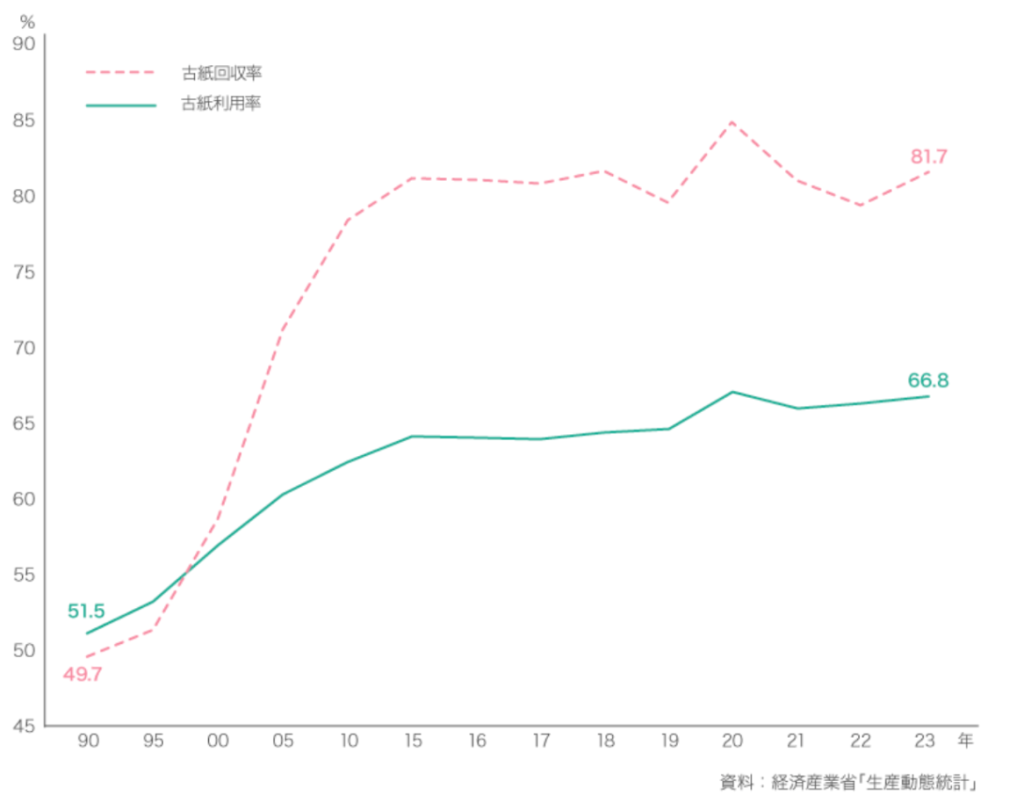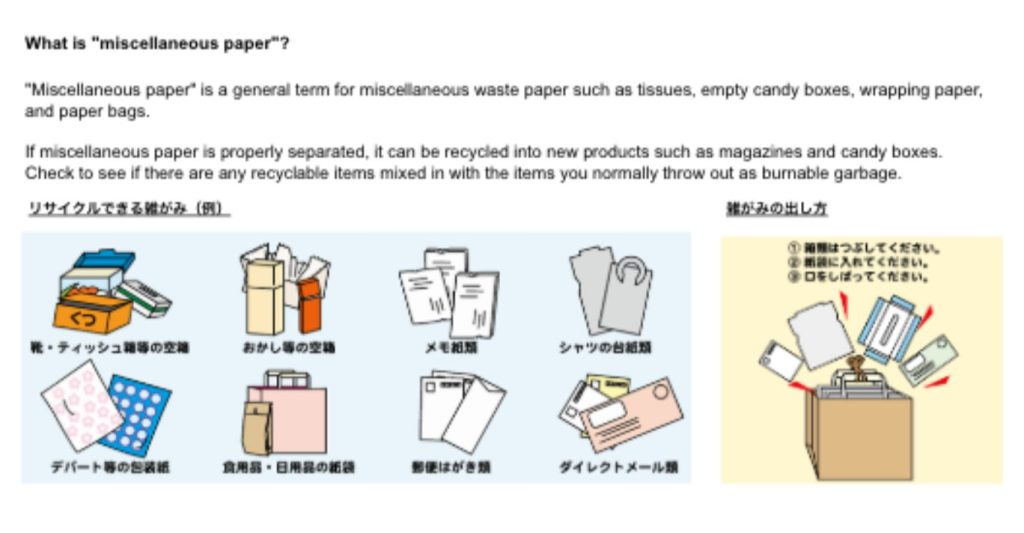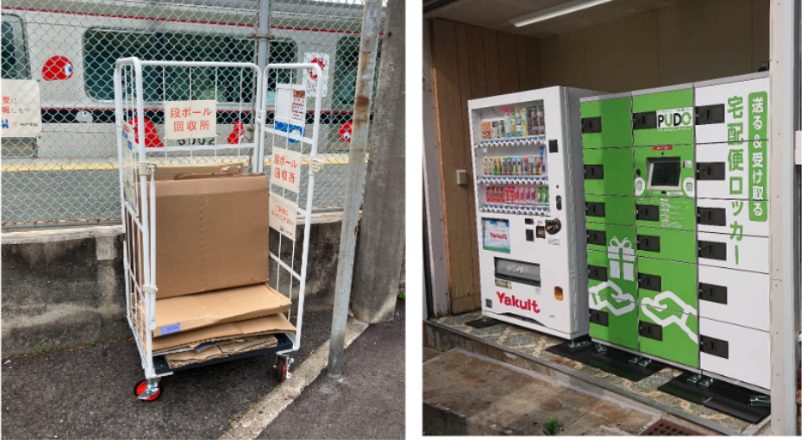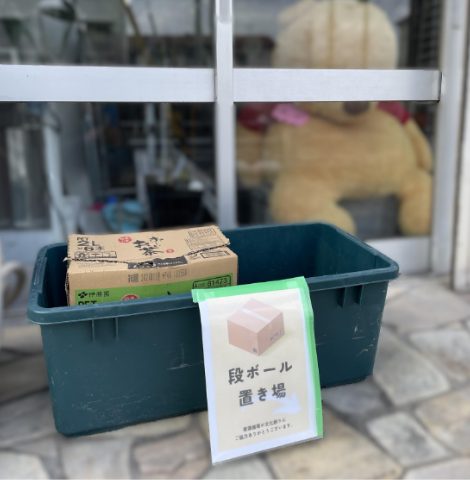Resource circulation by Social Bridge
Social Bridge has been operating a used-resource collection since Matsuzawa was founded in Kobe in 1953. We have been in business for approximately 70 years, deeply connecting with the local community. As a registered company by Kobe City, it aims to accelerate resource circulation through a variety of initiatives, including used-resource collection such as waste paper, metal scrap, and industrial wastes.
Projects for resource circulation by Social Bridge
- Used-resource collection designated by Kobe City: As a collective resource collection company designated by Kobe City, Social Bridge carries out collections mainly in Hyogo Ward, Kita Ward, Nagata Ward, and Suma Ward. The items collected include: cardboard, cans, newspapers/magazines, old clothes, and other items that are no longer needed at home or in the office. With proper separation, those can be recycled.
- Purchase of metal scrap: Social Bridge purchases electrical wire scraps and covered electrical wires generated at various sites such as construction, civil engineering, demolition, and renovation work.
- Collection of unnecessary items: In addition to the recyclable resources specified by the local government, when a large amount of unnecessary items are generated during year-end cleaning or moving, Social Bridge collects them all at once.
- Industrial waste treatment: Specific 20 types of wastes generated considered as “industrial waste”, such as cinders, sludge, waste acids, waste alkalis, are collected and properly processed as well.
Our Journey to Resource Circulation vol.1 ~ Social Bridge’s Initiatives for waste paper management~
In this column, the waste paper collection conducted by Social Bridge is introduced.
History of used paper collection and recycling in Japan
In Japan, the culture of collecting and recycling used paper has been rooted in ancient times. Its history began in the Edo period.
1. Edo period (1603-1868)
The history of used paper collection in Japan can be traced back to the Edo period. At that time, washi paper, a traditional Japanese paper made from the inner bark of plants, was treated as an extremely valuable resource. There are several factors making it difficult to mass-produce it: it took time and labor to produce it; and washi paper production was limited to specific regions with abundant climate and water resources, such as Mino (Gifu), Echizen (Fukui), and Tosa (Kochi). Used paper, therefore, was collected efficiently and reused instead of just being thrown away.
It is said that the following efforts were made to collect and recycle used paper at the time.
- Waste paper buyers: There were collectors in the town called “paper waste buyers” who collected used paper from the homes and shops and sold it back to paper makers.
- Recycling of washi paper: It was common for the used collected paper to be soaked in water to loosen the fibers and recycled as new washi paper.
- Use of backing paper for scrolls and documents: There was also a custom of using backing paper, and both sides were often used.

(Source) “Takarabune Katsura Hobashira”
2. Meiji and Taisho eras (1868-1926)
With the influx of Western culture, paper production increased and printed materials such as newspapers and magazines began to become popular during the Meiji and Taisho periods. Along with this, the collection and recycling of waste paper became more organized.
- Newspaper collection: Newspaper companies and the publishing industry are beginning to collect and reuse used paper.
- Development of paper mills: As the production of Western paper gained momentum, the number of factories that reused waste paper as raw material also increased.
3. Showa (1926-1989)
In the Showa era, the demand for used paper and the collection system changed due to the influence of war and economic growth. During the war (from 1930s to 1945), paper resources were in short supply, and the government encouraged the collection of used paper. Then collections of newspapers and magazines were actively begun. During the period of high economic growth (from 1950s to 1970s), paper consumption increased due to the development of a consumer society. As a result, the need for recycling increased, and a waste paper collection system was established by businesses.
The enactment of the Waste Disposal and Public Cleansing Law (Waste Cleaning Law) in 1970, which established a basic framework for the treatment of general waste and industrial waste, served as an opportunity for companies and local governments to accelerate their efforts. Then, in the late 1970s, as environmental awareness increased, companies and local governments started collecting recyclable wastes. In 1981, the Law Concerning the Promotion of Use of Recycled Resources (Recycled Resource Utilization Promotion Law) was enacted, and the paper industry and other industries began working to improve the utilization rate of recycled paper.
4. Heisei-Present (1989-)
Since the Heisei era, interest in environmental issues has increased, and waste paper collection systems have been established nationwide. In the 1990s, companies were obligated to make efforts to promote the reuse of waste paper. In 1997, the Containers and Packaging Recycling Law made it compulsory to recycle paper cartons and cardboard. Taking this opportunity, each local government began collecting paper cartons in earnest, and the movement to incorporate waste paper into municipal recyclable waste collection began to spread. In 2018, the “Plastic Resource Circulation Strategy” was formulated, further strengthening collaboration between paper and plastic separation and recycling.
As a result, Japan’s waste paper recovery rate is among the highest in the world, reaching 81.7% as of 2022, whereas the waste paper recovery rate in other countries is 75.4% in Germany, 68.2% in the United States, and 49.0% in China.

Initiatives in Kobe by Social Bridge
In Japan, where the waste paper recovery rate is extremely high, Social Bridge plays a part in this system.
As shown in the diagram above, after paper is used at home and office, it is recycled through the following steps: discard/collection, sorting, and recycling. Among these, Social Bridge takes a part of the discard/collection phase immediately after consumption.
- Discard
- In addition to the dates and locations specified by the local government, an opportunity is created where one can discard recyclable materials anytime and any location.
- Furthermore, it promotes recycling of “miscellaneous paper”, which is waste paper other than cardboard, old newspapers, and milk cartons.

- Case study
- Collection station at a station: In collaboration with Kobe Electric Railway Co., Ltd., we have set up a used cardboard collection station outside Nagata Station next to the online shopping product pick-up box.

- Social Bridge’s Office: A used cardboard collection box has been installed in front of the Social Bridge office (Nishinomiya), so that anyone in the neighborfood can throw it away anytime.

- Collection
- As a used resource collector designated by Kobe City, Social Bridge collects used paper at collection points such as government-designated locations, apartments, and business offices.
- It also collects used paper at collection sites set up by the private sector.
The used paper collected by Social Bridge is transported to Oomoto Shiryo (Hyogo Ward, Kobe City), where it is sorted. After being compressed and packaged, recyclable paper is reused as recycled material by paper manufacturers and others (some of it may be exported). In addition, soiled paper, waterproof paper, thermal paper, sticker mounts, etc. are sorted out as non-recyclable paper. Those are crushed, compressed, and packaged, and then reused as recycled materials by paper manufacturers and cement manufacturers.
Recently, there has been growing interest in the sustainability of paper use, including use of the FSC certification, an international certification that guarantees that wood is sourced from properly managed forests, and the Japanese Eco Mark certification, which is given to paper products that use a certain percentage of recycled paper. At Social Bridge, we will continue to work on creating systems to collect and recycle used paper in more diverse ways, starting from Kobe.
